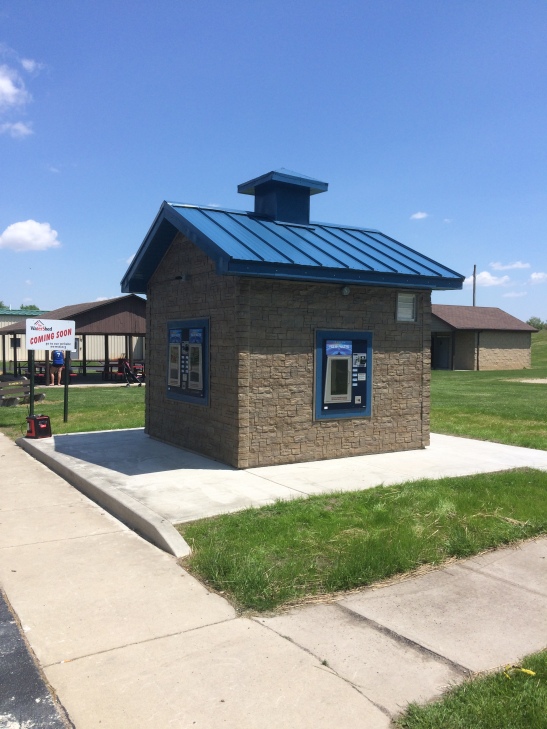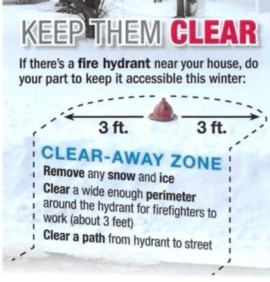Governments must balance their budget each year with their income and expenses.
 However, our revenue here at the Northwestern Water & Sewer District varies with the weather each year.
However, our revenue here at the Northwestern Water & Sewer District varies with the weather each year.
For example, excess rainfall generally means less water use as customers use their lawn sprinklers less, wash their vehicles less, etc. Unfortunately, our expenses are pretty consistent from year-to-year regardless of the weather.
Thus, our budget is similar to the past years and our rates are adjusted accordingly. We have a rate increase for our portion of the water and sewer bills. Also, in some cases our suppliers have also raised their treatment charges, causing the rate payer’s bill to increase for that reason too.
I have included an article on setting rates if you care to read it. Click here to read the article.
Below is an explanation of this move in rates, with a number of items explained in a question-and-answer format. We hope this gives you a better overall understanding of our rates.
2016 Rate Adjustment Explanation: Revised Wednesday, December 23, 2015
What exactly is happening to rates, and when?
There will be an increase to operation and maintenance rates as of January 1, 2016. The board approved a $1.86 per 1000 cubic foot increase in water volume charges and $3.96 for sewer accounts (there are 7.48 gallons/water in one cubic foot). Below you can find a comparison for varying usages. This adjustment is in addition to any increases from treatment providers (who supplies your water 7 sewer treatment) and represents general increases to the District’s rates. Your actual increase depends on the specific requirements of the area you live in within the District’s service area.
How much will bills change?
Again, your actual increase depends on several variables, not the least of which depends on where you live, and thus, which entity provides the water we distribute to you and sanitary sewer collection/treatment as well. Here are some typical increases one might expect to see for various household consumptions for our charges only:
|
DISTRICT OPERATION AND MAINTENANCE
|
|
MONTHLY CHARGES COMPARISON 2015 TO 2016
|
|
WATER AND SEWER COMBINED *
|
|
|
|
|
|
|
|
|
|
2015 |
2016 |
Difference |
| 500 Cubic Feet |
$46.88 |
$50.61 |
$3.73 |
| 1000 Cubic Feet |
$66.32 |
$72.96 |
$6.64 |
| 2000 Cubic Feet |
$105.20 |
$117.66 |
$12.46 |
| 2500 Cubic Feet |
$124.64 |
$140.01 |
$15.37 |
| *Average user uses approximately 800 cubic feet of water and sewer per month. |
Why is this rate adjustment necessary?
While nearly all aspects of the cost of living continue to rise, we pride ourselves on avoiding dramatic price adjustments. For our two decades of existence, our rates have only seen periodic modest increases. When they do occur, it is to maintain the quality, reliability and stability of the services we provide, per our company mission. The following outlines our specific rationale:
- Expenses are rising – Like almost everything in life, our expenses are on the rise, too. Some of our larger costs include material, labor, communication tools, computers, capital construction, electric costs and company health insurance, essentially the same items where we’ve seen increases that affect all of us in our personal lives.
- Consumption & revenue remain flat – While our expenses have increased, water consumption has remained flat in the past year. We are certainly dependent on the weather: usage is directly affected by the level of rainfall we receive; a dry summer is good for our water sales because usage increases, but we had a wet spring and a wet summer providing little extra revenue for those periods. Water conservation measures also have an impact on the volume of water used.
- Facility repair and replacement – Our team takes a proactive approach in maintaining our existing distribution lines and treatment facilities, including repair and replacement so as to avoid sudden and serious failure at unexpected and inconvenient times. The water and sewer rates include a factor for depreciation which helps offset the repair and replacement costs. Our debt increases due to these additional projects involving new and existing water and sewer lines.
- Wholesale water/sewer increases – Keep in mind, we are a distribution utility: we do not treat water; we only distribute water that we receive from various northwest Ohio suppliers, such as the Cities of Toledo, Oregon, Perrysburg, Bowling Green and Fostoria. So when it comes to some rate adjustments, we are only passing on the increased cost of our wholesale water without mark-up to cover the cost of the wholesale increase.
- Wholesale water/sewer supplier upgrades – Those other water/sewer suppliers have their own expenses and necessary upgrades, too, so they implement rate increases of their own which in turn affect the price of wholesale water that we pay; we have no choice but to pass on those increases directly to those who use our services.
- Safety/health regulations – We continually fund projects and programs to protect public safety and property, and these items must be factored into our overall budget. The August of 2014 Toledo water crisis is a perfect example of this.
How has NWWSD invested its dollars in the past year?
NWWSD is hard at work behind the scenes to provide a service most of us don’t think about very often, and we’re actively working to help keep costs down. Our capital projects offer a combination of proactive investments while carefully balancing needs vs. wants. Here’s a list of some of the projects that are underway or were completed within the past year:
Operation, maintenance and replacement projects
Water: Ampoint Replacement
- North Hufford Road replacement
- South 2nd Portage main replacement
- Kramer Road Waterline/Meter Pit
Sewer:
- Jennings Road pump station
- North Colony Area pumpstation abandonment
- Hillside Drive sewer replacement
- Northwood & Walbridge lateral replacements
- Homecraft Rehabilitation
- Oregon Rd (& Curtice Rd) Equalization Basin
- Latcha Road Sewage Grinder
- Wise Street Sewer Extension (abandoned pumpstation)
- South Bloomdale Manhole Rehabilitation
- Bloomdale Pumpstation replacement
New Extension of Services
- Bloomdale village rehab of lines
- Water: Bloomdale water tower repainting
- Sewer: Eastwood School Extension
When was the last time NWWSD had a rate adjustment?
Our last adjustment occurred in 2015, which consisted of numbers similar to this year. In 2015, the board approved a $1.76 per 1000 cubic foot increase for water, and $3.92 for sewer.
How can I find out who provides my water?
Area residents unsure of where their water is treated can confirm its origin through an interactive online map on our website at:
http://www.nwwsd.org/operations/water-quality/who-provides-my-water/.
The new map lets users enter their address and then displays a popup window detailing the treatment provider for their water (e.g., Toledo, Oregon, etc.), where the water comes from (e.g., Lake Erie, the Maumee River, etc.), and a short description of the treatment facilities and treatment process.
The popup also includes links to additional details, including links to the operator’s latest Consumer Confidence Reports.
Did the Toledo water crisis from August 2014 cause part of this rate increase?
No. The Aug. 2-4 water crisis is part of a larger problem that will have to be addressed over time by the City of Toledo water treatment plant.
How does my cost of water and sewer services compare to others?
NWWSD continues to make every effort to keep costs as low as possible. Even with our most recent rate adjustment, NWWSD’s rates remain among the lowest water utilities in northwest Ohio. Ohio EPA maintains a website for rate comparison, however it’s not exact for these comparisons.
Can I choose to get my water from a different utility?
No. The source of the water that comes out of the tap in your home depends on the underground infrastructure of pipes that carry the water from the treatment plant to your home. This infrastructure is costly, and it does not make sense to run pipes from individual residences to multiple suppliers. There are also regulatory requirements that prohibit cross connections between separate water systems to prevent cross-contamination in the event of a problem with one supplier’s system. The recent northwest Ohio water crisis showed us just how valuable water is in our lives. An electricity or phone outage is certainly a major inconvenience, but we don’t need them to live. Water is a necessity: we use it for drinking, washing, cleaning, cooking, growing food, and so much more. So, under current legislation, household customers are not able to change their water/sewer provider – the provider you have depends on where you live.
What happens to commercial and business accounts?
These accounts tend to be more consistent from year-to-year in their consumption patterns, depending more on their business demand than the rainfall we receive. This group will also see the same increases.
What input can I have on rate adjustments in the future?
The board of trustees holds regular meetings prior to adopting any rates. Board meetings are generally held on the second and fourth Thursday of each month, from 7:30 – 9:30 a.m. Committee meetings are also regularly scheduled; however, the day and time fluctuates. Board and committee meetings are open to the public.
Recent Issues
I. Environmental Regulations
For both the water and sanitary sewer treatment facilities, increasing regulations for environmental protection continue. These protections are well worth it, but the costs for additional tests and man hours devoted to it are expensive. We sample every day of the year to ensure drinking water is unaffected throughout the year.
II. Water Quality
Keeping the drinking water safe is our number one goal, whether the water comes from the Maumee River, Lake Erie or other areas such as local streams or municipally-owned wells.
III. Sewer Concerns
Separating sanitary sewer flow from storm water is the largest, most expensive issue for collection and treatment providers.
In our region, Toledo, Oregon, Perrysburg and Fostoria sewer plants are in need of major (i.e. expensive) upgrades that will continue for the next few years.
Reducing the heavy storm water flows that come from (inflow and infiltration sources) such as sump pumps, downspouts, broken perimeter field tile, and cracked manholes is an important task.
Replacing pump stations and collection facilities, making plant repairs and upgrades and replacing aging items are priorities for both treatment plant owners and collection systems such as those of the District.
NWWSD WEBSITE
NWWSD TWITTER
EMILYPOSTS ON TWITTER
NWWSD G+
NWWSD FACEBOOK
 District personnel will be providing water and sewer services in another village (McComb), this time in Hancock County. One new employee will come to the District from the village, but he is a key man as he operates their water plant!
District personnel will be providing water and sewer services in another village (McComb), this time in Hancock County. One new employee will come to the District from the village, but he is a key man as he operates their water plant!
 A new watershed is prepared to open in McComb on June 1st with a ribbon cutting ceremony. This is our 8th water vending machine and has a nice location in McComb. It should do well.
A new watershed is prepared to open in McComb on June 1st with a ribbon cutting ceremony. This is our 8th water vending machine and has a nice location in McComb. It should do well.

 While removing snow from sidewalks and driveways, please take a few minutes to clean the snow from around the fire hydrant on or near ad-joining property.
While removing snow from sidewalks and driveways, please take a few minutes to clean the snow from around the fire hydrant on or near ad-joining property. However, our revenue here at the Northwestern Water & Sewer District varies with the weather each year.
However, our revenue here at the Northwestern Water & Sewer District varies with the weather each year.
